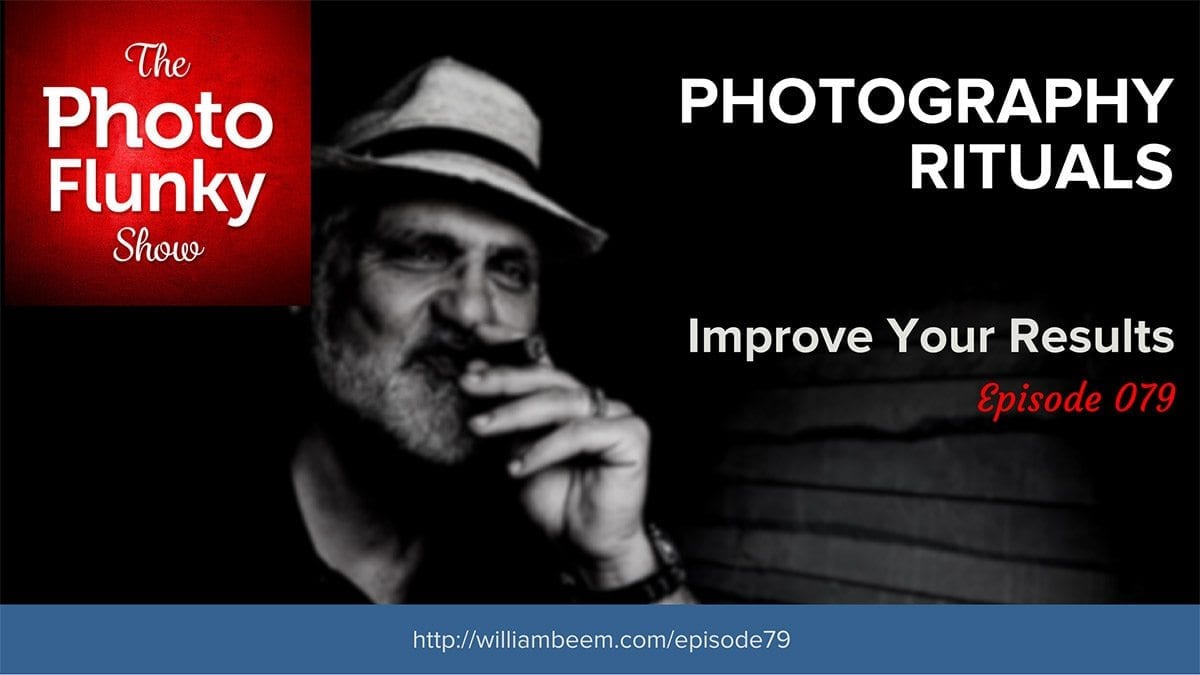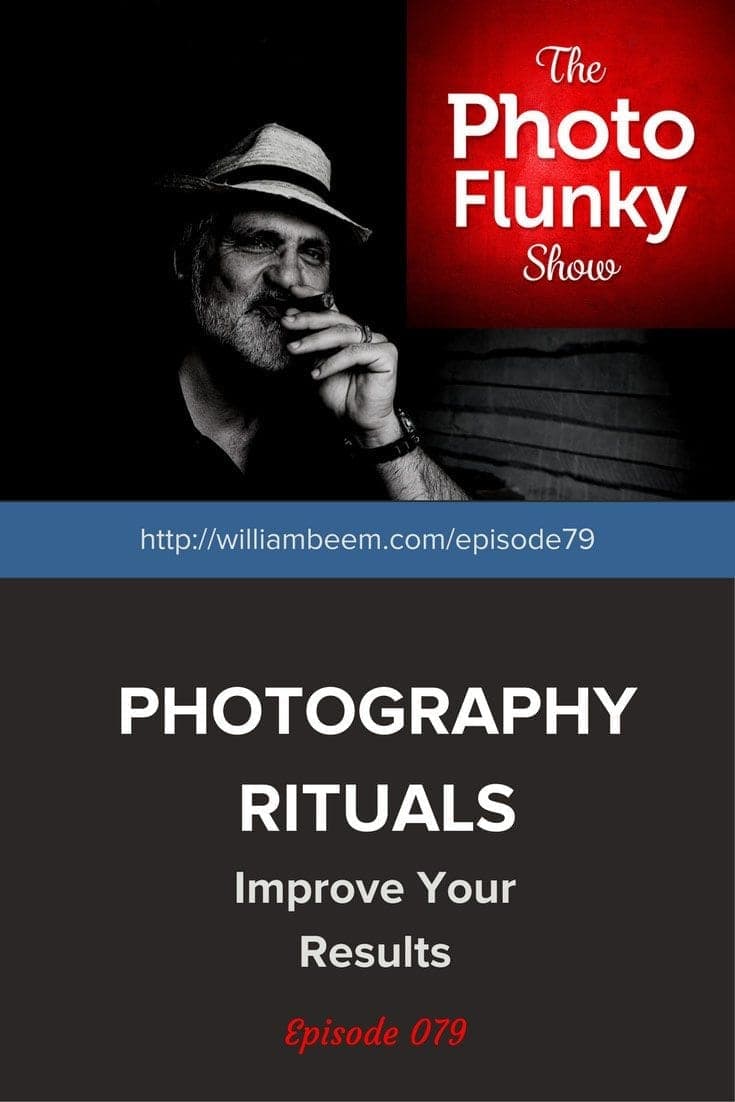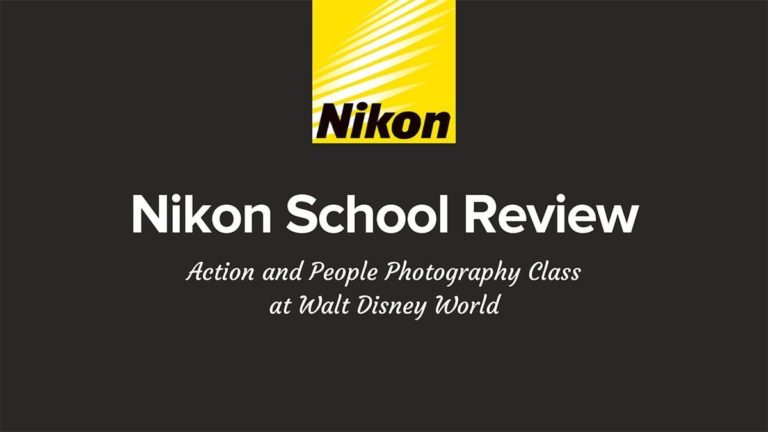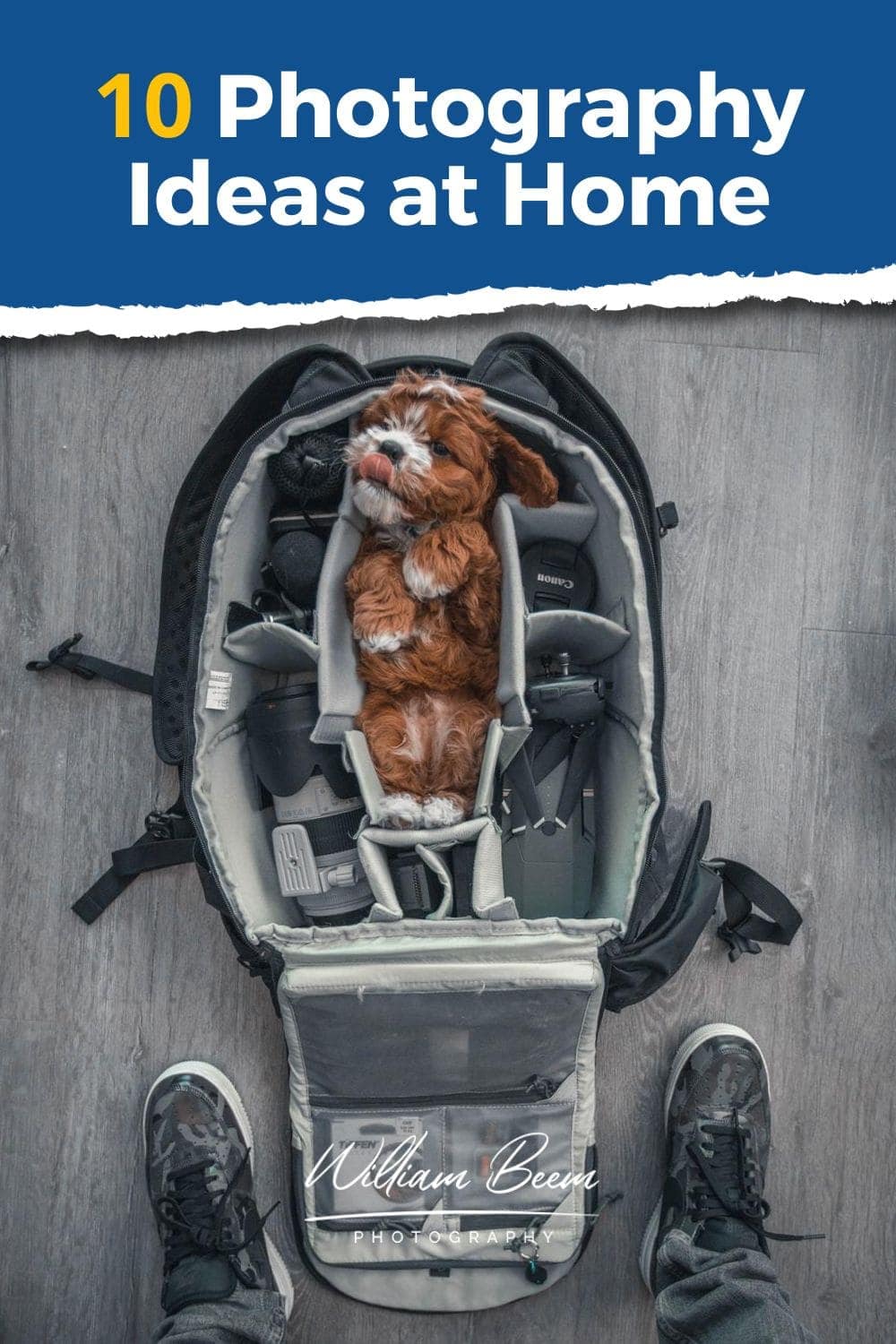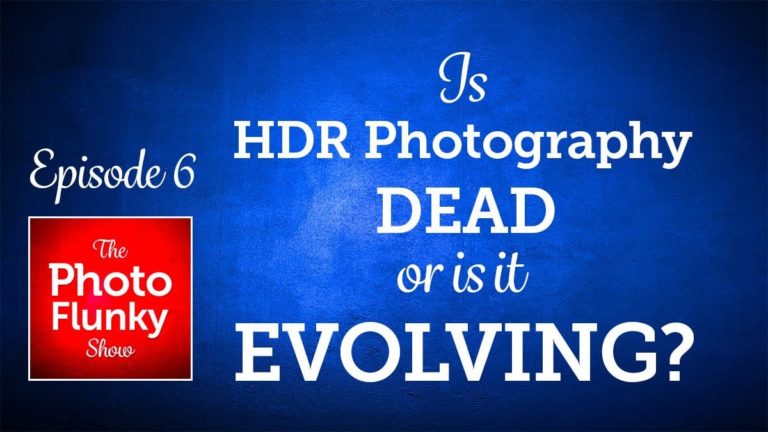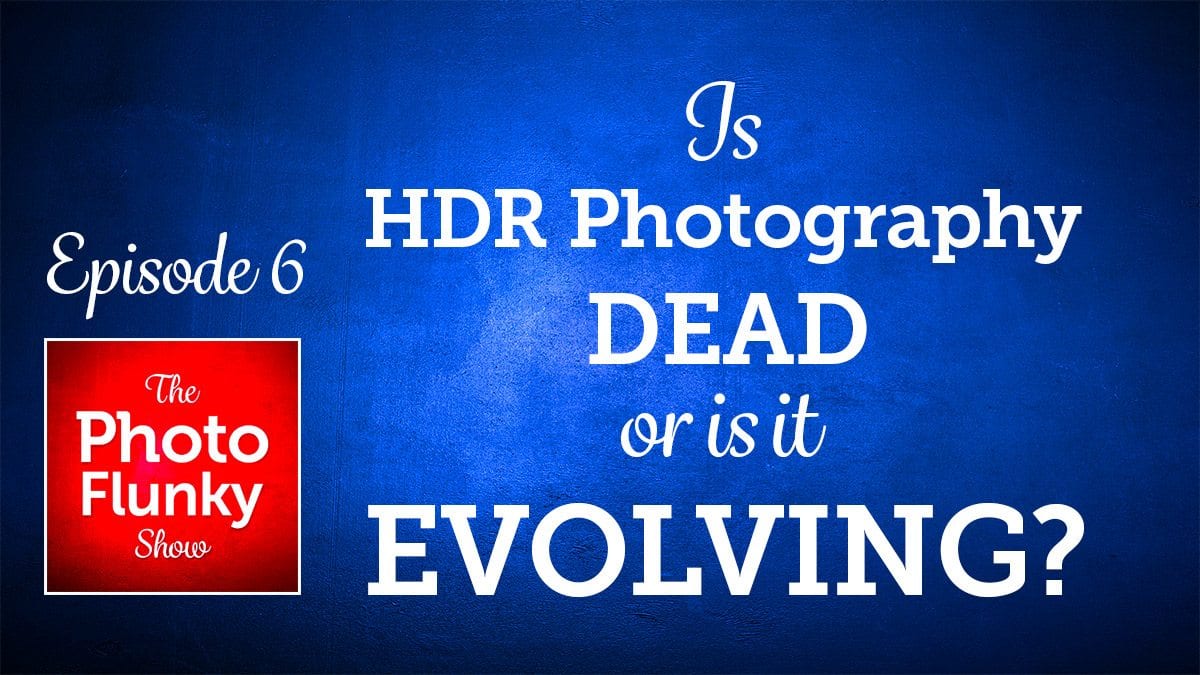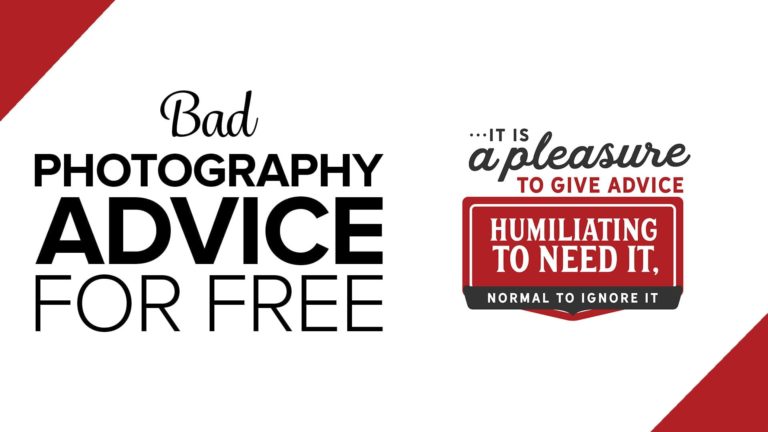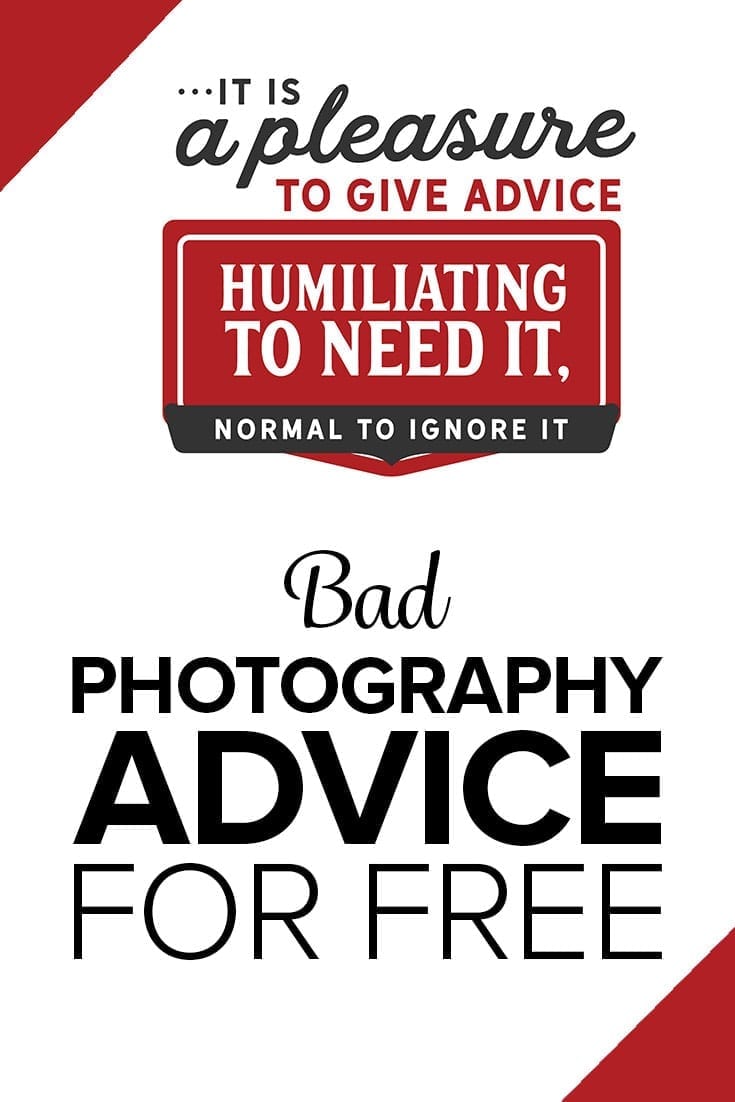Affiliate Disclosure: We earn a commission if you purchase through one of our links at no additional cost to you.
[smart_trarashk_player url=”http://traffic.libsyn.com/photoflunky/PF_079.mp3″ social_pinterest=”true” ]
**This post contains affiliate links and I will be compensated if you make a purchase after clicking on my links.
Photography Rituals Can Ensure You Don’t Forget Something Important on Your Next Photoshoot
You probably already have your own photography rituals, but perhaps you never thought of them that way. So what do we mean when we say “photography rituals.”
Rituals aren’t limited to religious ceremonies. They are the series of steps you take, or the process you follow, to complete a task. It’s easy to fall into a little ritual without even planning it.
For example, I know some ritual (some would say habitual) coffee drinkers. Their morning coffee is more than just a routine. For some friends, they require a perfect assembly process at a specific point in their day. Without this little ritual, they feel unprepared to take on the rest of the day.
It’s not just a routine or a workflow. It’s a ritual because it is important, meaningful and even necessary.
You can apply the same rituals to your photography.
Rituals Before Your Photoshoot
Preparation before a photoshoot can contribute to your success, just as a lack of preparation could find you wasting time instead of making great photos.
Lee and I are in the habit of preparing on the evening before a photoshoot. That means charging batteries, selecting our gear, packing the kit and being ready to go when it’s time on the day of the shoot.
We don’t want to waste time trying to do this before we leave on the day of the shoot. That could lead to a delay in everything that follows if we can’t find something.
The time when you perform your rituals is a part of the process. Just like some have coffee every morning, we prepare the night before.
That includes:
- Charging batteries
- Cleaning lenses
- Formatting cards
- Selecting the gear we need
- Packing the bags
The fact that we have this photography ritual means we’re prepared on the day of the photoshoot. We’ve considered our needs, packed our gear and are ready to go.
Of course, that’s only one ritual.
When you arrive at your location, you may need to unpack and setup. The way you get ready to shoot can also have an impact on everything that follows. You want to know where you keep your gear, make sure it’s protected, and configure your gear for the photoshoot at hand.
Not every photoshoot is complex. Even if it’s something as simple as walking around with a body and one lens, I have a small ritual so I know where I keep my lens cap (front left pocket).
Photography Rituals While You Shoot
What do you need to do while you’re shooting?
I’m often going through a mental checklist for my photoshoot ritual. In most cases, I’m looking for light, background and subject.
You may have your own rituals for composition – looking for angles, leading lines, or just walking around your subject to work the scene. It’s all part of making sure that you get the shot you need and don’t come home empty-handed.
Once I’m done at the scene, I have another ritual for breaking the set. That sometimes means breaking down soft boxes, stowing my gear in the bag and definitely protecting the cards with my photos.
Post Processing Photography Rituals
Once I’m back from a photoshoot, there are two more rituals that are very important to me.
First, I need to empty my bags and stow my gear in their place at home. Lighting gear goes in one area, camera and lenses go in another, and my camera bags get stuffed in a closet overflowing with even more camera bags. I want everything to be where I expect it when it’s time for the next photoshoot.
Second, I need to make sure I get those photos loaded on my computer. Then I need to make sure I have a backup of the photos. There is a third backup to a cloud service (I use CrashPlan Cloud Backup).
I won’t format my data cards for another photoshoot until I know I have at least two backups.
When it comes to post processing, I have rituals for selecting photos and my initial post processing in Lightroom. Consistency works for me.
Macphun Coupon Code
I mentioned at the start of the show that you can save 10% (or $10) on Macphun software using my coupon code. This is my affiliate code, which means that I make a small commission if you purchase from me, but it also means that you save money.
For Macphun products like Luminar and Aurora HDR, you save $10.
For other Macphun products, like the Creative Kit, you save 10%.
Just visit: https://williambeem.com/macphun
When you check out, use my Macphun coupon code: BEEM
Subscribe to The Photo Flunky Show
Thank you for listening to The Photo Flunky Show. Make sure you get every episode by subscribing.
iTunes – https://williambeem.com/itunes
Stitcher – https://williambeem.com/stitcher
Google Play – https://williambeem.com/googleplay
Blubrry – https://williambeem.com/blubrry
Social Media Links
We love seeing your photos and keeping in touch with you on social media. Here’s where you can find us.
Transcript
THE PHOTO FLUNKY SHOW: Episode 79
Links to subscribe to the show:
You can find links to this episode and all of the other ones at photoflunky.com
iTunes: williambeem.com/itunes
Google Play Music: williambeem.com/googleplay
Stitcher Radio: williambeem.com/stitcher
Blubrry: williambeem.com/blubrry
Keep up with us on social media:
Twitter: @photoflunky
Facebook: William Beem Photography
YouTube: William Beem Photography
You can find links to this episode and all of the other ones at photoflunky.com and of course if you’d like to subscribe, we would love that. Go to at williambeem.com/itunes or williambeem.com/googleplay or williambeem.com/stitcher or even williambeem.com/blubrry
William: Thank you for joining the Photo Flunky Show, episode number seventy-nine.
For today’s topic we’re going to be talking about photography rituals to improve your results.
Hi there, my name is William Beem.
Lee: Hi! My name is Lee Beem.
William: And we want to talk about rituals. But before we get to that, show notes are going to be available at williambeem.com/episode79 and of course you can find a transcript of the show there for free.
Links to subscribe are there and also at photoflunky.com which has got a player, so you can listen to this show and all the previous ones.
I also want to mention I’ve got a discount code for MacPhun software. It is a ten per cent discount on most products, but it’s a $10 discount on Aurora HDR and for Luminar
Just use my last name. The code is: BEEM when you check out and it will apply your discount. You can get there easily. Just go to williambeem.com/macphun
Why are photography rituals so important?
Rituals really are things that you do almost – the initial idea was – in a religious ceremony of some sorts. When we got married we went through the rituals, we exchanged our vows, we put rings on each other’s fingers and then we stuffed our faces into some cake.
Lee: That worked!
William: It was a really wonderful ritual. Rituals don’t necessarily need to be a ceremonial thing anymore. Basically it’s a process that you follow to help you from screwing up.
Lee: It’s a routine for a specific purpose.
William: We found out that when we don’t follow our rituals – at least I found out – I screw up.
Lee: Yeah, I’ve had my share of them!
William: What we want to do is go over a little bit of rituals before you shoot, while you’re taking your photographs and then also some post processing rituals.
The idea is that you get into a workflow. You get into a routine and these rituals help you make sure that you’re doing the things that need to be done and you’re not forgetting something. And it becomes a matter of habit.
It’s a ritual almost like if you’re a coffee drinker and you get up in the morning and prepare your coffee. It’s a little ritual to get you started with your day. Some people just can’t function until they’ve had that first cup of coffee, but they’ve got to go through the little process.
Photography is kind of the same thing. If you get these little processes down, these little rituals will help you make sure that you do everything just right and you’re prepared to get your best results.
Lee: I agree.
William: OK, That means you get to go first.
Lee: OK.
William: Before you shoot, what’s important to you?
Lee: I like to have my things ready the night before or the day before. I do not like scrambling around just before I leave at short notice, trying to put things together. I like to have a battery charged. For some reason I like to have a spare battery that is at least at fifty per cent, preferably fully charged as well. I don’t know why because I’ve never burned through an entire battery power in one day.
I also like to check that first of all the camera is in the bag. Yes, don’t ask about that! It’s happened!
I’m serious.
The lenses that I need are in the bag; and also I like to remove anything that I know I’m not going to need. I don’t want … it’s just a risk opening and closing bags while you’re out for losing things or dropping things or something slipping out. The other thing is having a memory card and a spare memory card.
If I’ve got those things together I’m pretty much good. If I have a tripod, hand in hand with a tripod, I like to have my cabled remote shutter release. That is about it.
William: I agree with you. A ritual I have before I go for a shoot – it depends on what I’m going to do or whether it’s going to be a studio thing or if I’m going to be out someplace. If I know I’m going for a studio shoot and other people are going to be there and they are depending upon me, it’s not just a matter of charging the batteries and picking a lens. I’m going to have multiple bodies.
If one camera fails I am no longer a photographer if I don’t have another camera to back myself up.
The same thing with lenses. I really load down because it’s something I just throw in the car, drive to the shoot or if it’s in the house I’ve got it here, but everything is together.
What I found out though is even though you go through the rituals, sometimes something will creep up that throws you for a loop and you have to add to your rituals.
The example is I use rechargeable batteries in a battery grip on my camera. That time I went to Cuba I had these Eneloop batteries, which are really good, popular batteries for photographers. But they were exhausted and I didn’t know that.
So I would be shooting on this once in a lifetime trip to Cuba; at least that’s the way I looked at it at the time. Suddenly my camera would just stop working. I didn’t know why.
If you’ve ever seen a battery grip on a Nikon there is a little thing on the side where you twist a switch and you can pull it in and out. There’s a tray filled with eight batteries in it.
I found myself having to shoot every other shot pulling that battery thing out and putting it back in and closing it before I could take my next shot or two. The batteries were that exhausted.
It wasn’t that I forgot to charge them up. I was charging them up while I was away.
Lee: They weren’t holding power.
William: So part of my ritual now is I have to test my batteries on about a quarterly basis. Even before the shoot I’m doing the same thing. I want to charge up my batteries, I want to make sure the equipment that I need for the shoot is there and if I’m smart I’ll also go zero out my camera.
That’s another thing I found out. If you don’t know what your camera settings are and you just assume that you do, sometimes you really screw up.
For example we went off on the Walt Disney World Animal Kingdom – Wild Africa Trek. I shot the whole thing in bracketing. I wasn’t aware because I wasn’t shooting brackets. I was just taking single shots here and there and I came back and said, why is this so bright? Why is this so dark? And then towards the end it dawned on me. Oh, my! I’m bracketing!
Lee: The funny thing is I’d also started and suddenly realized because I was looking on the back of the LCD and I said to you, “Oh! Silly mistake here. I’ve got bracketing on.” I’d been shooting HDR the night before.
Also sometimes I got my ISO or my white balance – white balance doesn’t really matter too much if you’re shooting in R AW – but you still want to try get it as good as possible.
William: It saves you time later on.
Lee: I have done silly things. I’ve arrived without a memory card in my camera.
William: Well that’s where I’ve broken my bag down into a system of things that I need. Obviously I know that I’m going to need charged batteries, I’m going to need my camera, I’m going to need my lenses. I’ve got a little pack of batteries, because I want spare batteries in case I run into a situation like these ‘ that were exhausted again. So I’m still carrying those.
I’ve got a little pack for memory cards. I may not take the whole thing but I am always going to have at least one spare.
There is going to be something that I might use for a white balance card. Even if I don’t use it I’ll take it because if the opportunity arises that I can pop it up someplace.
Now granted, if you’re going on a Wild Africa Trek it is very difficult to go up to one of the rhinos and say, would you please hold this card? At least they are neutral gray to begin with.
There are certain things I’ve learned that help make better shots. I want to take them with me. That means I’m going to be lugging some stuff around. There are times I go out there with just one camera body on a strap, a lens and I’m OK with whatever I come back with.
But if it’s something where I know I’ve got to have the shot, then that’s where all the other stuff comes around so it’s kind of like are these going to be snapshots? I hope I get something. Or are these going to be ‘I must get something’ shots?
What my rituals are will really vary depending upon the importance of the results that I capture.
Lee: That is true. Because general use, if I have my camera, it has a working battery with enough power to get me through and I have a lens and a memory card, I’m fine.
Even if it’s the wrong lens – because I’ve sometimes looked at a lens, packed it and thought I was packing a different lens – and it’s just completely thrown everything for a loop. Because there is a difference between an 18-105 and a 70-300. Yep, and I took the long focal length one.
I still found ways to make it work. I’ll figure it out. Obviously if it’s a very specific situation where you’re shooting, it’s not so easy.
William: I had the same problem years ago. I went on a trip to San Francisco. I was working for a company and I was on a business trip out there and I thought I am going to do some photography while I’m here.
I was still with my D200 and the big lens to have at that time for travel was very convenient. It was the 18-200 mm, and I really loved that lens. But I also brought along a wide angle lens, even though 18 was pretty wide. So I had that Tokina 12-24.
Before I go shoot down to Baker Beach to shoot the Golden Gate Bridge at sunset, I was really looking forward to that shot. I’m cleaning my lens inside of the restaurant. I was at the Cliff House. As I turned it over to clean the other side, the front element fell out and cracked on the floor. Thank you Nikon quality control engineer who missed that one!
I mean that was my main lens for the entire week. So everything I shot was with that 12-24 after that.
I got some interesting shots that way; not the ones I’d planned on. But if I hadn’t thought ahead to make sure I’ve got another lens, I would have nothing. That bag would literally just sit in the hotel room the whole time.
That pre-planning and those little rituals of thinking what can go wrong, what do I need before you shoot, can really save you before you head out.
Rituals during photography. Lee?
Lee: I don’t have that many rituals. I think my lack of planning during photography and just going with the feel of it is part of my ritual though. I don’t go out looking for specific photographs.
William: You are very much in the moment when you do your photography. You are thinking, let me get there first and feel the environment and then see what strikes me.
Lee: I really am. But definitely moving around is one of mine. Being aware of what’s around me. It’s almost like my eye is looking through a lens as I’m walking through and enjoying the experience.
Something will jump out at me and pull me in.
William: I think what works for you though is you go in there with a design experience and background with you. I’ve noticed what you do is even though you don’t have a plan for it, you have background knowledge of things that work and you’re examining the scene for your details; you’re examining the scene for things that you know that work and you’re finding out: are they here? And that’s kind of your ritual, I believe.
Lee: It really is. It’s that simple.
Also, to move around. Get the shot. Change angles, try different things, different focal lengths, zoom in, zoom out, allow some crop room, get close. That pretty much sums up my rituals. I am a little bit loose about it, but the ritual is certainly there.
William: For me, particularly since I’m into portrait photography for the most right now … we just recently did a shoot last weekend for the family and my ritual is going to start off with making sure that I have everything just right before I start pulling the trigger or hitting the shutter button. Once I know everything is just right then we can start concentrating and having fun.
So that means setting up the lighting we want, it means making sure that I’ve got the little X-Rite Color Checker Passport. The first shots that I take other than checking the lighting are Lee standing there holding the Color Checker. I’ll get that shot so that helps me set my white balance.
I’ll do an in-camera white balance for the set up that we have. That is really the ritual. All the little steps to make sure everything is just right.
Setting up the lights, having a stand-in model there to adjust that, making sure the white balance is right, making sure the Color Checker is there so I can make sure the colors are accurate when I’m in post processing.
That doesn’t mean that the final result of a photograph I’m going to put out is going to be an accurate color representation. I might do some color grading on it. But I want to have that base when I start to know exactly that things are what they are and then I can go around screwing them up.
We’ve got our rituals for the shot. And another one that I found out when I’m shooting and I should be doing this the night before. I’m kind of OCD about this. I want to check my camera settings the night before and I want to check them again just before I shoot.
Post processing rituals. You’ve got a camera, all your images on it, what’s the first thing you do?
Lee: I put the card in. I just use Lightroom so when I go to import the photos I do a quick check through the thumbnails. There are usually a lot of them that are almost duplicates and I normally know the first few of that set that I took was a waste. There’s a reason why I shot 20 and I’m only going to use the last three. So I might import just the last three of that group.
I do a lot of culling before I even import and I import the things I do my final check and delete the ones that I’m not going to be processing. Sometimes I’ll process a few that are similar. I’ll at least start and get a good feel for what’s going to work and what’s not.
Once I’ve finished processing my photos that I’m going to keep I export them, I save them and they are gone. I don’t keep stuff that I’m not going to use.
William: See I’m the other way around. I import everything. Except if something is blatantly obviously wrong. If I have done a shot of my foot or something is so blurry that there is nothing you can do with it, or maybe something just simply isn’t exposed. Obviously mistakes are going to go.
I still import them first because I just import everything. I make a backup. I’ve got a second drive here where I back up all my photos and I will not format that card and erase it to use on another shoot until I know I’ve got at least two copies saved someplace else.
That’s an important ritual because once you format that card, I don’t want to have to go back and try get some software to recovery things. All it’s really doing is delisting it in the directory; the photos are still there until you write over them. But I just want to make sure I’ve got two copies of that file before I format that card. To me that is my biggest post processing ritual – making sure that I didn’t go through all the time and effort to capture something that I then deleted or screwed up or lost before I can get a result out of it.
Lee: I make his hair stand on end because I just don’t keep the stuff, I don’t back it up, I never back up my catalog, I don’t make copies …
William: And I go through enormous extremes. I’ve got a 16 terabyte drive here, followed by another drive for backups and I’ve got other drives that I use just for archives. Then I’ve got crash plan systems so I can upload things to the cloud. So there are three different places at least that I can have it before. Well the cloud isn’t going to upload that quickly, but I’m going to have at least two places here and then ultimately upload into the cloud before I wipe out that card.
Lee: His photos are much better than mine.
William: I’ve got tons of photos I’m never going to show anyone. I should probably go ahead and delete them, but at least I’ve got good backups before I delete them.
Lee: Yes, you do.
William: The whole idea behind the rituals, like I said, is to keep you from making some of the mistakes that we mentioned. That’s really what we are finding out. If we stick to our rituals and we go through the processes of making sure that we are prepared and ready, all we have to do is concentrate on our photos and that’s kind of nice. You can get better results that way.
If you’re not paying attention to your rituals and you’re making mistakes that you don’t see at the time – let’s face it, looking at that tiny little LCD on your camera doesn’t always show you the details of what’s happening.
Lee: It’s like the first mile of a run. It lies.
William: Yeah, everything seems like it’s great on that little LCD. Yeah, that’s good. Or maybe it’s a little dark or a little bright and you think, I can easily take that back in post. Then you load it up on your computer and look at it on a bigger screen and think, oh no. What was I thinking?
These rituals are there to help you make sure that you can reduce the number of mistakes you’re going to make. I won’t claim that I’ve had a perfect photo shoot. Although last week really came close. I guess the whole point is you want to reduce the number of things that go wrong so you can concentrate on making your best photos.
Thank so much for listening to the Photo Flunky Show. Show notes are going to be available at williambeem.com/episode79 And of course you get a transcript of the show there for free. The show is now available on iTunes, Google Play Music, Blubrry and Stitcher Radio. And of course, you can find more at photofluky.com
We really appreciate you being here. We’ll see you again next week.

